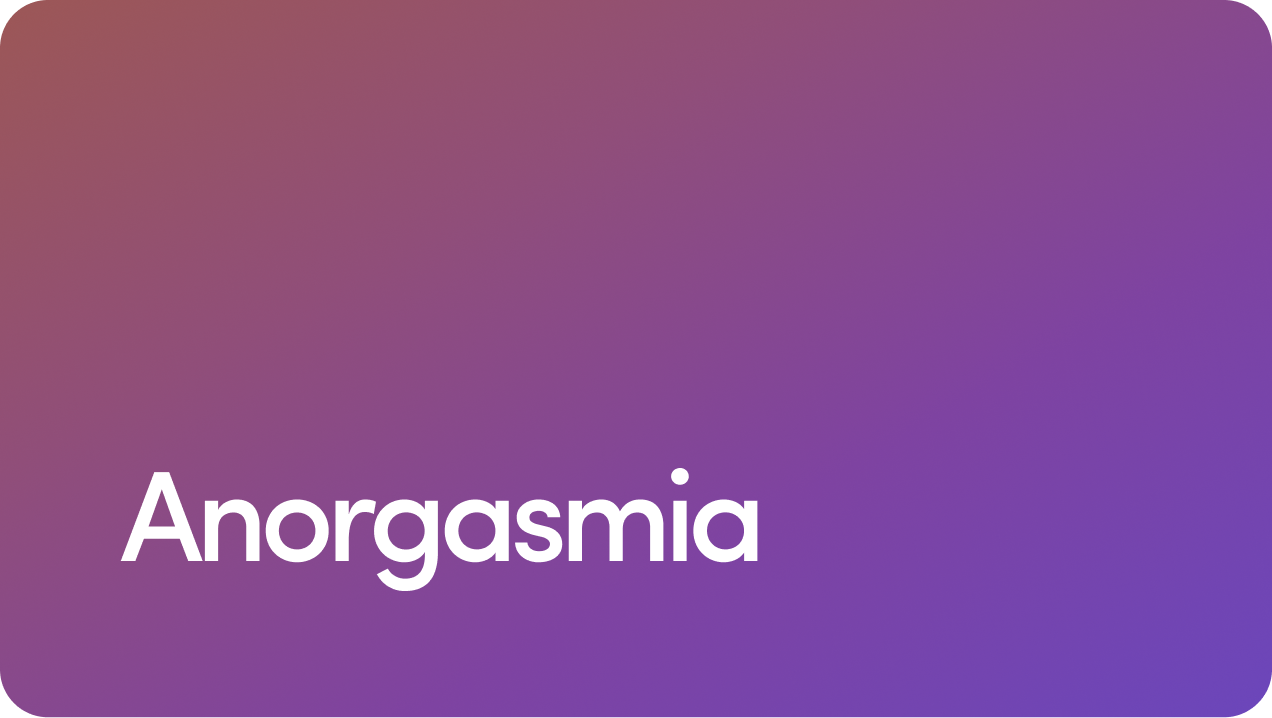Hyperprolactinemia, Symptoms, Causes, and Treatment
Hyperprolactinemia is a medical condition characterized by elevated levels of prolactin in your blood.
Overview
What Is Hyperprolactinemia?
Hyperprolactinemia is a medical condition characterized by elevated levels of prolactin in your blood. Prolactin is a hormone produced by a gland at the base of your brain called the pituitary gland.
In women, prolactin is primarily responsible for stimulating breast milk production after childbirth. Anyone who isn’t actively breastfeeding generally has low levels of this hormone in their blood, and high levels can cause changes to overall health.
Hyperprolactinemia in men may cause problems such as reduced sex drive and erectile dysfunction. The most common cause is a pituitary tumor, but luckily, most of these tumors aren’t cancerous and are easy to treat.
Pituitary tumors that lead to the overproduction of prolactin are very rare. They’re called prolactinomas, and they’re thought to occur in just about 0.01 percent of men. They’re still rare in women, but about 3 times more common.
Symptoms
Symptoms of Hyperprolactinemia
Symptoms of hyperprolactinemia in men can vary depending on the severity and duration of the condition. Common symptoms of high prolactin levels include:
Decreased libido (low sex drive)
Infertility
Gynecomastia (enlargement of breast tissue)
Galactorrhea (rare, but possible male lactation)
Headaches and vision disturbances (especially if a pituitary tumor is present)
Why Does Hyperprolactinemia Cause These Symptoms?
Prolactin is a hormone that stimulates the production of breast milk. In men, the action of this hormone is less clear and remains largely unexplored. Prolactin is believed to play a role in the refractory period after orgasm, the time after orgasm during which a man is physiologically unable to achieve another erection or orgasm. But the exact mechanisms are also not fully understood.
High levels of prolactin can cause low testosterone levels and may contribute to problems with sperm production. This is because prolactin may lead to the inhibition of a hormone called gonadotropin-releasing hormone (GnRH) released from your hypothalamus.
GnRH is an important hormone that stimulates the release of luteinizing hormone (LH) and follicle-stimulating hormone (FSH).
LH acts on your testicles to stimulate the production of testosterone, while FSH acts on cells in your testicles that stimulate the production of sperm.
In men, most of the symptoms of hyperprolactinemia are caused by disruptions in these hormones.
Symptoms in Women
Symptoms of hyperprolactinemia inwomen include:
Irregular or absent menstruation (amenorrhea)
Galactorrhea (milk discharge not related to childbirth or nursing)
Infertility
Decreased libido
Painful intercourse (due to vaginal dryness)
Headaches
Visual disturbances
These symptoms are mainly due to disruptions in estrogen and progesterone production caused by elevated prolactin levels.
Causes
Causes of Hyperprolactinemia | Hyperprolactinemic Causes
Hyperprolactinemia has multiple causes, but the most common cause is a pituitary tumor. We’ll cover each of the potential causes in more detail below.
Pituitary Tumors
The most common cause of hyperprolactinemia is a pituitary tumor. Tumors affecting your pituitary gland are named after the hormones that they overproduce.
Tumors that lead to too much prolactin secretion are called prolactinomas.
Your pituitary gland is a very important gland because it produces hormones that act on many tissues in your body. It’s divided into the anterior pituitary gland or lobe and the posterior pituitary gland or lobe.
The anterior lobe produces six hormones:
Adrenocorticotrophic hormone
Thyroid-stimulating hormone
Growth hormone
Follicle-stimulating hormone
Luteinizing hormone
Prolactin, in special cells called lactotrophs
Prolactinomas account for up to 40 percent of pituitary adenomas, which are the most common type of pituitary tumor. They’re usually benign and non-cancerous, but can still cause problems if they grow large and push on other structures in your brain.
Prolactinomas are thought to occur in about 0.03 percent of women and 0.01 percent of men.
Pituitary tumors can also produce more than one hormone. For example, tumors that overproduce growth hormone and prolactin are relatively common.
Excessive Stress
Too much stress has been linked to hyperprolactinemia, although the exact reason stress may cause your body to produce more prolactin isn’t known. It’s thought that it might be because stress causes changes in levels of neurotransmitters in your brain, such as dopamine and serotonin. Stress-related prolactin elevation is usually mild and temporary, and it rarely causes clinically significant hyperprolactinemia.
Medications
High prolactin levels can be a side effect of medications such as:
Antipsychotics, such as risperidone or haloperidol
Antidepressants, like SSRIs and tricyclics
Anti-nausea drugs, such as dopamine receptor-blocking agents (also called dopamine antagonists) like metoclopramide and domperidone
Blood pressure medications like verapamil
Opioids, such as methadone or morphine
Cholinergic agents such as physostigmine
Anticonvulsants like phenytoin
Antihistamines such as cimetidine and ranitidine
Low Thyroid Hormone
As many as 40 percent of cases of low thyroid hormone (called primary hypothyroidism) may be associated with hyperprolactinemia. When the thyroid doesn’t make enough hormones, the brain releases more TRH (thyrotropin-releasing hormone) from the hypothalamus to try to fix it. TRH not only boosts thyroid-stimulating hormone (TSH) but also increases prolactin production from the pituitary gland. As a result, prolactin levels go up, leading to hyperprolactinemia.
Other Causes
Hyperprolactinemia in men can also be caused by:
Liver disease
Seizures
Herpes zoster (the virus that causes shingles and chicken pox)
Idiopathic (no identifiable cause)
Additionally, vigorous exercise might cause a temporary increase in prolactin that might give inaccurate readings on a blood test if exercise is performed shortly before blood is drawn.
Risk Factors
Hyperprolactinemia Risk Factors
Risk factors for hyperprolactinemia can include:
Genetic factors. Some genetic conditions, such as multiple endocrine neoplasia type 1, can increase your risk of prolactinomas.
Sex. Women have a higher prevalence of prolactinomas, especially women aged 25 to 34.
Medications. Taking certain medications puts you at higher risk of hyperprolactinemia. Examples include some antipsychotics, antidepressants, and blood pressure medications.
High stress levels. Stress may cause a temporary increase in prolactin levels.
Radiation to the head or brain. Previous exposure to radiation of your brain, such as previous cancer treatment, can increase your risk of pituitary tumors (and brain tumors in general) that could contribute to hyperprolactinemia.
Underlying medical conditions. Hypothyroidism, chronic kidney disease, liver disease, chest wall injuries, and previous chest wall surgery can increase your risk of hyperprolactinemia.
Diagnosis
Diagnosis of Hyperprolactinemia
Receiving a hyperprolactinemia diagnosis usually starts with seeing your primary healthcare provider. They will run initial tests such as:
A review of your personal and family medical history
A review of your symptoms
A physical exam
If your doctor suspects you may have hyperprolactinemia or another hormonal problem, they might send you to see a specialist in endocrinology for additional tests.
Doctors usually diagnose hyperprolactinemia through a blood test to measure serum prolactin levels, or the levels of prolactin in your blood. The ideal time to measure prolactin levels is midmorning after fasting.
Other blood tests you might receive include:
Thyroid function test
Renal (kidney) function test
Insulin-like growth factor-1 test
Adrenocorticotropic hormone test
Luteinizing hormone test
Follicle-stimulating hormone test
A healthcare provider may also want to do the following tests:
Pituitary imaging. Magnetic resonance imaging (MRI) of the brain is used to detect tumors like prolactinomas if there are no obvious non-tumor causes.
Visual field testing. Tumors around your pituitary gland can also push on a structure that carries visual information from your eye to your brain, called the optic chiasm. This pressure might cause visual problems such as double vision or blurry vision. If a pituitary mass is found with imaging, your doctor will likely recommend visual testing as well.
Treatment
Treating Hyperprolactinemia
Treatment options for hyperprolactinemia depend on the underlying cause. Common treatments include the following.
Treatment for Prolactinomas
Small prolactinomas (microadenomas) can often be treated with medications to shrink the tumor.
Doctors use a class of drugs called dopamine agonists to shrink these tumors.
The most common options are:
Cabergoline
Bromocriptine
You’ll have your prolactin levels measured regularly while taking these medications. Once your prolactin levels are in a normal range, you’ll taper off these medications.
Larger tumors are called macroadenomas or macroprolactinomas. These tumors, or smaller tumors that can’t be effectively treated with medications, may need to be surgically removed.
The most common surgical procedure is called transsphenoidal surgery. During this minimally invasive procedure, doctors remove the tumor through a small incision in your nasal passages instead of going through your skull.
Occasionally, radiation therapy might also be administered after surgery to help destroy any parts of the tumor that weren’t removed.
Treatment Options for Other Conditions
Depending on what’s causing your hyperprolactinemia, you might also need treatment for an underlying condition, such as:
Primary hypothyroidism. Hypothyroidism is usually treated with a synthetic form of thyroid hormone called levothyroxine.
Chronic kidney disease. Mild kidney disease might be treated with dietary changes such as reducing salt intake. Severe kidney failure may need dialysis or a kidney transplant.
Liver disease. Liver disease might be treatable by stopping whatever caused it in the first place. For example, stopping a certain medication or the consumption of alcohol. Severe cases may require a liver transplant.
Medications. You may need to adjust or discontinue certain medications. It’s important to do this with supervision from your healthcare provider.
Testosterone Replacement Therapy
Your doctor may recommend testosterone replacement therapy if you have ongoing hypogonadism (low testosterone levels) that persists for more than 6 months.
Testosterone replacement therapy can help prevent complications caused by testosterone abnormalities, such as osteoporosis, which is low bone mass due to loss of bone mineral density. It usually doesn’t cause symptoms, but can put you at risk of fracturing a bone.
Prevention
Preventing Hyperprolactinemia
While not all cases of hyperprolactinemia can be prevented, especially those caused by tumors, some preventive measures can help reduce your risk. Consider the following:
Closely monitor side effects of drugs you’re taking that are known to raise prolactin levels.
Communicate with a healthcare professional promptly if any of your medications are causing troublesome side effects.
Seek treatment for underlying conditions that can lead to hyperprolactinemia, such as hypothyroidism, chronic kidney disease, and liver disease.
Receive regular physical exams and blood tests to help catch hormonal imbalances early.
Eat a healthy diet to help reduce your chances of developing conditions like kidney disease.
Minimize your intake of alcohol to reduce your chances of developing liver disease.
12 Sources
- Al-Chalabi M, et al. (2023). Physiology, prolactin. https://www.ncbi.nlm.nih.gov/books/NBK507829/
- Brody S, et al. (2006). The post-orgasmic prolactin increase following intercourse is greater than following masturbation and suggests greater satiety. https://pubmed.ncbi.nlm.nih.gov/16095799/
- Dourado M, et al. (2020). Relationship between prolactin, chronic kidney disease, and cardiovascular risk. https://pmc.ncbi.nlm.nih.gov/articles/PMC7327580/
- Glezer A, et al. (2022). Hyperprolacinemia. https://www.ncbi.nlm.nih.gov/books/NBK278984/
- Kolnikaj TS, et al. (2024). Pharmacological causes of hyperprolactinemia. https://www.ncbi.nlm.nih.gov/books/NBK599196/
- Pecorari IL, et al. (2022). Growth hormone and prolactin co-secreting pituitary adenoma: A case report and review of literature. https://link.springer.com/article/10.1007/s42399-022-01224-y
- Petersenn S, et al. (2023). Diagnosis and management of prolactin-secreting pituitary adenomas: A Pituitary Society international consensus statement. https://www.nature.com/articles/s41574-023-00886-5
- Prebtani LB, et al. (2024). Hyperprolacinemia. https://empendium.com/mcmtextbook/chapter/B31.II.8.9
- Raut S, et al. (2019). Unveiling the role of prolactin and its receptor in male reproduction. https://pubmed.ncbi.nlm.nih.gov/30840999/
- Rawindraraj AD, et al. (2023). Physiology, anterior pituitary. https://www.ncbi.nlm.nih.gov/books/NBK499898/
- Samperi I, et al. (2019). Hyperprolactinaemia. https://pmc.ncbi.nlm.nih.gov/articles/PMC6947286/
- Thapa S, et al. (2023). Hyperprolactinemia. https://www.ncbi.nlm.nih.gov/books/NBK537331/
Editorial Standards
Hims & Hers has strict sourcing guidelines to ensure our content is accurate and current. We rely on peer-reviewed studies, academic research institutions, and medical associations. We strive to use primary sources and refrain from using tertiary references. See a mistake? Let us know at [email protected]!
Related Conditions
 Erectile Dysfunction
Erectile Dysfunction
 Premature Ejaculation
Premature Ejaculation
 Low Testosterone
Low Testosterone
 Retrograde Ejaculation
Retrograde Ejaculation
 Pelvic Floor Dysfunction
Pelvic Floor Dysfunction
 Anorgasmia
Anorgasmia
*All images feature a model portrayal
(unless otherwise noted).